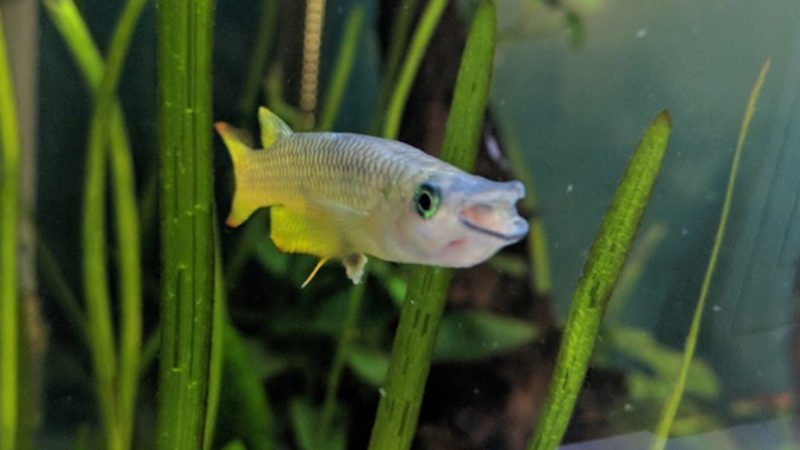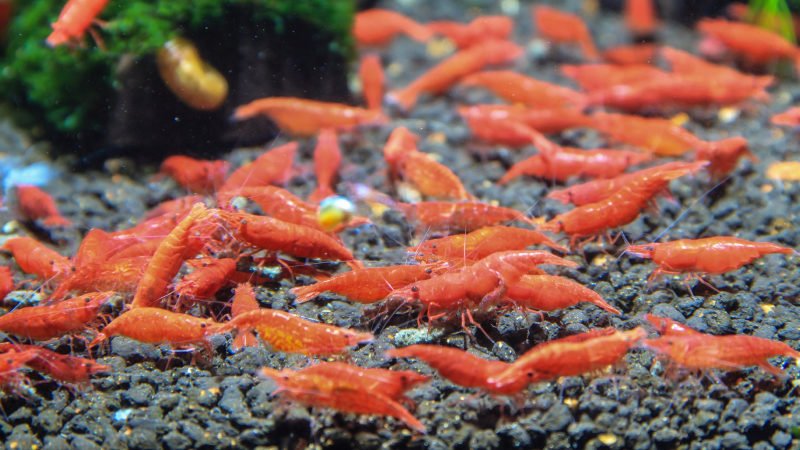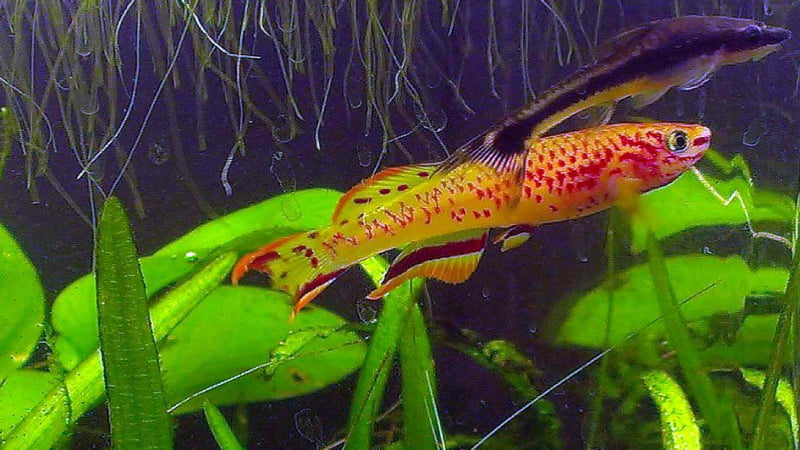When setting up an aquarium tank, many people want to mix many species to make the tank look magnificent and beautiful. If you are planning to house different species of fish in the same tank, the most important question you should ask yourself is whether they will get along with each other.
It is no different when it comes to killing fish or shrimp as well. Are Killifish predators that eat Shrimp? Do they get along? Will killifish eat cherry shrimp?
Keep reading this article to find out the answer. I will also share with you some tips to keep both killifish and shrimp in the same tank.
Will Killifish Eat Shrimp?
There is a simple and direct answer to this question: Yes, most Killifish will eat Shrimps. However, this may be possible just due to the type of Killifish, the type of Shrimp present in the fish tank, the ratio of one to the other, as well as the conditions provided in the fish tank. Hence, if you choose both types of killifish and Shrimp carefully so that they do not harm each other, adjust the ratio of both in the tank, and set the appropriate tank conditions so that they can coexist harmoniously, then they can coexist peacefully.

Will killifish eat cherry shrimp?
Yes, they will. Even when they are nowhere near being fully grown, the killifish are able to eat adult cherry shrimp and will do so.
5 Tips To Keep Both Killifish And Shrimp In The Same Tank
A huge possibility is that Killifish will eat shrimp. So how to prevent this? How can you still keep both in the same tank?
The following are methods to ensure that the Killifish and Shrimp stay safe from each other.
Choosing The Right Size Of Killifish And Shrimp
Killifish will attack and eat whatever fits into their mouth. Because of this, you should keep the Shrimp species that are bigger than Killifish to keep them safe. As a result of your Shrimp being bigger, the chances of your Killifish attacking or eating your Shrimp are very low.
When shrimp fries are living in the same tank at the same time, then it makes the most sense to just purchase a different tank. In this way, you will be able to separate the Shrimp from the Killifishes first and let them grow on their own before you introduce them to each other.
However, if you would like to keep smaller Shrimp species alongside your Killifish, then the following four suggestions might be helpful!
Plant Densely In The Tank
With so many plants in your aquarium, you can rest assured that most of your shrimp will be protected from the presence of your Killifish. For this purpose, mosses are the best plants you can put in your aquarium. My recommendation would be to try Marimo moss, which is completely natural and has a larger size!
The densely planted environment in your tank will allow your Shrimp, especially the fry, to have a place where they can hide. In doing so, you will be increasing the chances of your shrimp surviving to adulthood.
Ensure That Killifish Have Enough Food
As simple as this solution is, it’s very important to note that it’s also quite effective. As an example, if you provide your Killifish with sufficient food, they will have a much lower chance of attacking your Shrimp in order to eat them. Accordingly, these are the types of foods that you need to provide to your Killifish so that it is satisfied.
- Brine Shrimp
- Mosquito Larvae
- Daphnia (the main source of live food)
- Fruit Flies
- Worms
- Paste Fish Foods
Adding More Shrimps

Many people may not have even considered this tactic before. Keeping more Shrimp in an aquarium tank may make your Killifish feel as if they were outnumbered. By doing so, you will be able to protect a majority of your shrimp from your Killifish.
Because this method is not an ideal solution, it is a very high-risk method if you want to make sure that your shrimps are safe. The next suggestion may be more suitable!
Remove Some Shrimp To A Breeding Tank
Firstly, what you must understand is that it is natural for aquatic species of greater size to attack those of smaller size. Thus, it should not come as a surprise to you when your Killifish starts displaying its predatory, aggressive behavior towards Shrimps.
However, there is one possible last solution to this issue, which is to move a few of the Shrimp into a breeding tank. You can then replace the Shrimps that your Killifish have eaten. It may seem harsh to you, but this is simply the way of things in the natural world.
FAQs
Can killifish live with shrimp?
It is possible for killifish to live alongside shrimp. It is possible to successfully keep shrimp and killifish together as long as you keep the right varieties. But, you should be aware that killifish may eat shrimp fry, even adult shrimp as long as they fit into their mouth.
In spite of the fact that killifish are carnivorous and can eat shrimp, adult dwarf shrimp and lampeye killifish, for example, can live peacefully together. You need to research the compatibility of your specific species of killifish and shrimp before you put them in the aquarium together with your killifish.
Will clown killifish eat shrimp?
Clown killifish are not big enough to eat most shrimp, although they will take shrimp eggs and tiny fries if they are small enough.
Can clown killifish live with dwarf shrimp?
A clown killifish does not seem to eat adult dwarf shrimps regularly but they can eat baby shrimp. You can keep clown killifish live with dwarf shrimp only when the shrimps are fully grown. It would be a good idea to provide more aquarium decorations and live plants so that the shrimp will have a place to hide if they feel that they need to.
Video: Cherry Shrimp And Least Killifish
Conclusion
It would be wonderful if we had a variety of species in our aquarium tank. However, we cannot add any fish or shrimp we like without a thorough understanding if they are compatible or not.
In this case, keeping killifish and cherry shrimp together could not be a good idea as some killifish species will eat cherry shrimp. However, this article has given some tips on how to keep killifish and shrimp together. I hope that helps.

Annette M. Chaney is an experienced marine biologist with over 20 years of experience as an aquarist and fishkeeper. She started her first aquarium at a young age, filling it with frogs and goldfish obtained from the ten-cent pet store.
Annette grew up caring for and breeding African Cichlids, which led to a hobby in high school that doubled as a profitable means. Attending Reed College gave her time to solidify herself as an accomplished aquarium caretaker with an eye for sales. After that, from 2009 – 2013, she studied at Roger Williams University – one of the most prestigious universities for Aquaculture and Aquarium in USA. She is the founder of AquariumCircle since 2010.
